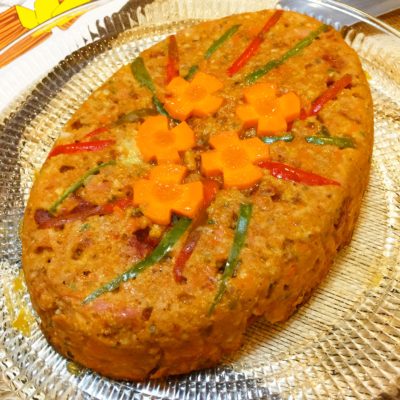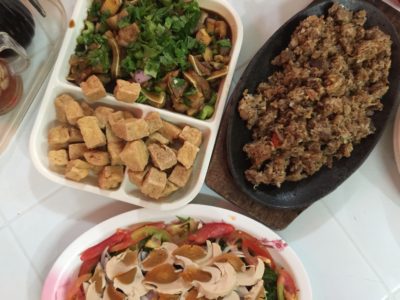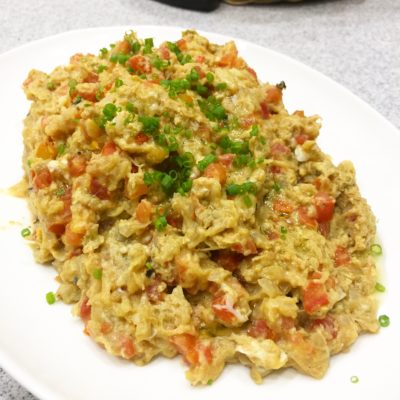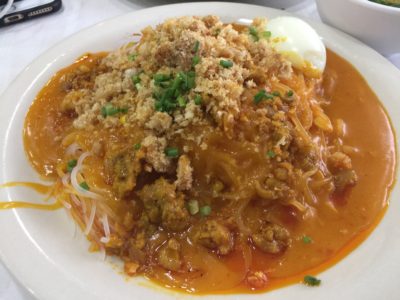
Ever since the advent of Food Network in the early ‘90s, food has reached a pop culture significance even the network’s own founders could not have predicted. Now, food is everywhere and everyone wants to either eat it, study it, talk about it, or make it. Of course, as with anything popular in the social media age, now people want to debate and fight about it too.
One emerging topic for such a debate or fight would be about the authenticity of a particular dish. What makes a dish truly “authentic?” Would an “inauthentic” dish be an automatic affront to the culture or only when it “mistakenly” claims to be? Who decides on a dish’s “authenticity” anyway?
Ah questions, questions, and more questions.
There are some, both in the food industry and not, who seem to have all the answers. “It has to be made by a person from that culture.” “Using foreign ingredients in a Filipino dish is not authentic.” “It has to be made the way it has always been made.”
Unsatisfied, I checked the Web. No, not the world wide one. I went old school.
 The Merriam Webster Dictionary defines authentic “as worthy of acceptance or belief as conforming to or based on fact.” Hmm… I’ll skip that one in the meantime. Reading on, it also says, “made or done the same way as an original.”
The Merriam Webster Dictionary defines authentic “as worthy of acceptance or belief as conforming to or based on fact.” Hmm… I’ll skip that one in the meantime. Reading on, it also says, “made or done the same way as an original.”
Aha. There it is. For a dish to be authentic, it must be made the same way as it was originally done! All these modern interpretations of a dish must all be inauthentic then. Adobo, Pinakbet, Sinigang, Lechon must be made the way they were first made for it to be truly authentic. Did you cook your adobo in a non stick pot? Inauthentic! You made a stock separate from where you cooked your bangus for sinigang? Inauthentic! You pierced the skin of the lechon while cooking it? Inauthentic! You live in the United States and you cooked Laing with kale? Inauthentic! You have no Filipino blood and you cooked Pinakbet. Inauthentic! You added a touch of raspberry vinegar in your Kinilaw na Salmon? Inauthentic! You added bacon to your Ginisang Monggo? Inauthentic!
I kept reading on, though, and Merriam Webster also defines authentic as, “not false or imitation” and, “true to one’s own personality, spirit, or character.”
But, but… what is the personality, spirit or character of Filipino cuisine?
Late in 2016, I stepped onto Ozamis City for the very first time, preparing to give the students of De La Salle University a cooking demo. I wanted to show them a new take on one of their local dishes to keep things exciting, so I asked a local student what her favorite Ozamis dish was. It took her a long moment to answer but finally she said, “Whatever my mother cooks.” I pressed on, and asked what specialty dishes her mother makes. Another long pause later, she explains, “It depends on what we find in our backyard.” That’s when I knew that I had been schooled by the young lady.
Filipino food has always been farm-to-table, seasonal, D-I-Y, MacGyver cuisine. If you take a look at the names of all our dishes, it is not so much a name as it is a type of process. Adobo (stewed in vinegar), Sinigang (sour soup), Inihaw or Sinugba (grilled), Lechon (spit fire roasted), Kinilaw (raw in vinegar), Kare Kare (thick peanut sauce), Prito (deep fried) or Guisado (stir fried) are all processes, which is practically an invitation to innovate and substitute as the seasons, economy and surroundings dictate.
 What if cooking in a non stick pan became your thing because your family hates cleaning pots and non stick makes it easy to do so? What if you made extra Sinigang stock because your wife likes a lot of soup? What if you discovered that piercing lechon skin while cooking helped keep it crispy longer? What if you were making Monggo Guisado for a person allergic to seafood? What if you desperately wanted to make Kinilaw to avoid homesickness while stationed in Canada? What if you were committed to cook with local ingredients in Washington D.C.? What if you married a Filipino and your mother-in-law trained you on how to cook their family’s Pinakbet? Are any of these still “inauthentic?” Wouldn’t it be more of making the dishes “true to your own personality, spirit or character,” thereby making the dishes “authentic?”
What if cooking in a non stick pan became your thing because your family hates cleaning pots and non stick makes it easy to do so? What if you made extra Sinigang stock because your wife likes a lot of soup? What if you discovered that piercing lechon skin while cooking helped keep it crispy longer? What if you were making Monggo Guisado for a person allergic to seafood? What if you desperately wanted to make Kinilaw to avoid homesickness while stationed in Canada? What if you were committed to cook with local ingredients in Washington D.C.? What if you married a Filipino and your mother-in-law trained you on how to cook their family’s Pinakbet? Are any of these still “inauthentic?” Wouldn’t it be more of making the dishes “true to your own personality, spirit or character,” thereby making the dishes “authentic?”
Aha! There it…Wait a minute. This means authenticity cannot be gauged by a pedantic list of ingredients or technique. A cuisine with no rules is madness! Authenticity must be gauged!
Perhaps people become authenticity fanatics in a misguided effort to preserve our culture. I hope there aren’t people who are authenticity freaks just to show how much they know and how exclusive they can be. Perhaps there are those who are “authenticity Nazis” in an overzealous attempt to protect from appropriation or “Columbusing.”
Perhaps Merriam Webster has the answer if we read further. It also says authenticity “is sincere and authentic with no pretensions.”
Making your family, friends and loved ones happy, not by following an age old recipe to the last gram, but the way they specifically enjoy their food? Caring for the environment by sourcing locally to lessen fossil fuel emissions and to boost the local economy? Innovating on old recipes but remembering to honor the traditional techniques you have learned? Modernizing a dish but keeping the taste of the dish intact, thereby keeping its spirit? Would you define that as sincere? Would you define that as no pretensions? Would you define that as authentic?
Remember Merriam Webster’s first definition of authentic? It is “as worthy of acceptance or belief as conforming to or based on fact.” Maybe there are a lot more “authentic” versions of Filipino dishes out there that you realize. Maybe we just have to accept them, the truly sincere ones, of course.
Aha. There it is… at least, for Filipino food.
